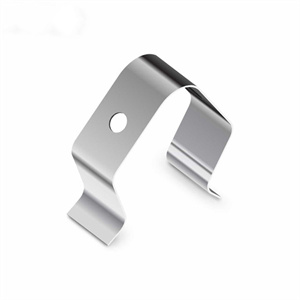When choosing a material for Spring Steel Clips, the main considerations are its elasticity, strength, corrosion resistance, wear resistance, and cost. Here are some commonly used spring steel clamp materials:
Carbon spring steel: such as 65Mn, 70# steel, etc. These grades have high elastic and fatigue limits and are often used in the manufacture of medium-stress, small-sized spring clamps. They are relatively low-cost and suitable for high-volume production and cost-sensitive parts of spring steel clips.
Alloy spring steel: such as Si-Mn series, Cr-V series, Cr-Mn series, etc. Alloying elements such as silicon, chromium, tungsten, etc., are added to this type of steel to improve the strength, hardness, and heat resistance of the steel. Alloy spring steels are suitable for the manufacture of spring steel clips that require high stress, high temperature environments or corrosion resistance.
Stainless steel spring steel: such as 304, 316 and other stainless steel materials. These materials have good corrosion resistance and aesthetics, and are suitable for spring steel clips used in wet, corrosive environments. The cost of stainless steel spring steel is comparatively high, but its advantages in specific applications make it an ideal choice for spring steel clips.
Special alloy steels: For spring steel clips that need to withstand extremely high stress, extreme temperatures, or special corrosive environments, special alloy steels may need to be used, such as titanium alloys, high-temperature alloys, etc. These materials are often costly, but meet specific extreme operating conditions.
When selecting spring steel clips material, it is also important to consider its processability, heat treatment requirements, and compatibility with other components. Work closely with suppliers and engineers to select the most appropriate material based on specific application needs, operating environment, and cost budget to ensure the performance and reliability of spring clamps.
